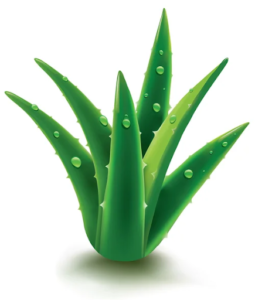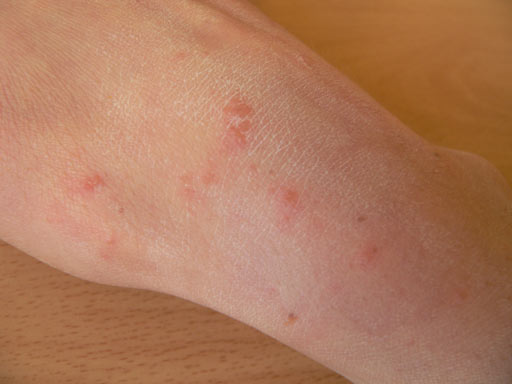What are Scabies?
Scabies is an infestation of the skin caused by a microscopic species of parasitic mite. Also known as the human itch mite, Scabiei var. Hominis is spread by direct, extended contact with someone who has been infected by the parasite. The parasite burrows into the skin to make tunnels, sets up camp, and then the female mite lays its eggs in the upper layer of the skin.
After exposure, it can take as short as 1-2 days or up to 8 weeks to show signs or symptoms of an infestation. However, the mite can only live for up to three days off of their host. The most common sign of a scabies infestation is a rash in reaction to the mite, its eggs and its waste. If you believe yourself or a family member has scabies, see our guide below for treatment planning through a natural scabies treatment or by prescription.
What are Signs & Symptoms of a Scabies Infection?
Here are the signs and symptoms of Sarcoptes Scabiei infestation:
- Intense itching at the site of infestation, which is worse at night
- Rashes with sores that resemble acne
- Blistering appearance of the affected skin
- Scale-like appearance of the skin
- Tunnels that look like small crooked lines on the skin
 Rashes after scabies infestation in children may differ from those in adults. For example, kids typically experience rashes on the head, neck, feet soles, and the palms of their hands. As we age, the rash is more common in our nooks and crannies, including the areas between fingers, wrists, elbows, armpits, waist, thighs, genitals, and buttocks.
Rashes after scabies infestation in children may differ from those in adults. For example, kids typically experience rashes on the head, neck, feet soles, and the palms of their hands. As we age, the rash is more common in our nooks and crannies, including the areas between fingers, wrists, elbows, armpits, waist, thighs, genitals, and buttocks.
Health-Professional Prescribed Treatment of Scabies
The treatment of scabies starts with creams or ointments that can completely kill the infestation. The prescription medication will easily eradicate all the scabies parasites, their eggs, and waste material from the skin. Permethrin 5% cream is typically prescribed for scabies patients. It is applied to the entire surface of the body.
For infants and toddlers, we recommend that you place the cream on the head and neck. However, for older children, you can apply the cream from the neck down. About 8 to 14 hours after applying the cream, bathe your child to remove it. Normally, the cream is applied the night before sleeping and is washed off in the morning.
If someone in your household has scabies, assume you and all the other members of the family were also exposed. Use the prescription cream on all your family members. It can take up to 8 weeks before signs or symptoms of the infection show up, so immediate treatment is worthwhile.
The prescription cream should clear up the infection immediately after the treatment is done, but itching typically remains for a week or longer following treatment. Moreover, keep an eye out for reinfection which is common and much more intense. Help make the affected person comfortable with anti-itch creams or home remedies.
Home Remedies for Itching
Here are some home remedies that help relieve itching due to scabies infestation:

- Apply a cold pack to the affected area.
- Take a bath with finely ground oatmeal, baking soda, or apple cider vinegar. Run the water at a lukewarm (not hot) temperature and limit the bath to 10-15 minutes. Too long or too hot a bath will cause your skin to dry out and worsen the itching.
- Moisturize! Apply any topical medications first and then cover it with a layer of moisturizer.
- Drink plenty of water.
- Humidify your home, or the child’s room, to 50-75%
- Apply aloe vera. It has anti-bacterial and anti-fungal properties that relieve itching and burning.
- Use topical numbing or anti-itch creams, like hydrocortisone.

image from Deposit Photos - Take an antihistamine, like Benadryl or Claritin, or extreme itching.
- Wear loose, natural fabric clothing. Avoid irritating fabrics like wool.
- Use fragrance-free products to avoid irritants.
- Keep calm and avoid stress.
You can also use the following creams and oral medicines to relieve itching:
- A topical numbing or anti-itch cream like hydrocortisone.
- An antihistamine drug like Benadryl or Claritin, for extreme itching
How Can You Prevent Scabies Infections?
Here are some useful tips to avoid scabies infection:
- Avoid scabies mites by avoiding contact with an infected person.
- Clean all cloth material in hot water or by dry cleaning.
- Seal all other suspected items in a bag for at least three days to kill any living mites.
For questions or comments, please respond to this post or contact us.




